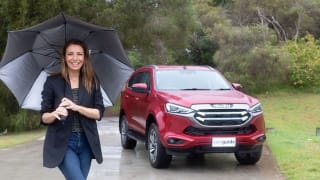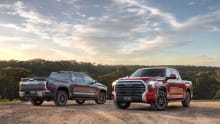A lot of people buying this type of vehicle are horrified the first time they work out their real-world fuel consumption and compare it with the official sticker on the windscreen. Frankly, very very few cars can get anywhere near that official figure. It’s the result of a standard test that bears little relationship with real driving and it’s really only for comparisons with other vehicles, not a realistic idea of what to expect.
Even so, 14 litres per 100km at highway speeds does seem high. Being a 2019 model, it won’t be that the engine is still brand-new and tight, so we can rule that out. But, there are many other factors that affect fuel consumption more than you might imagine. Does the car have a roof rack fitted, for instance? If it does, you can easily use an extra litre per 100km at freeway speeds thanks to the extra drag. And that’s if there’s nothing on the rack (it will be worse loaded).
Is the car carrying a lot of accessories such as a bull-bar, rear step, extra fuel tanks and maybe even a winch? All these add weight and weight kills fuel economy. What tyres are you running? Big mud tyres with an aggressive tread can drastically ruin fuel economy, so can taller tyres than standard which mess up the gearing and force you to use more accelerator pedal than a car on standard tyres. Also, the road from Melbourne to Wagga is mostly freeway with a 110km/h limit. Experience has shown that most cars will give their best fuel economy around the 80 to 90km/h mark, and every kilometre over that sees fuel economy go downhill. There could be a very big difference in your car between 100km/h and 110km/h. Even a stiff headwind in a big, bluff-fronted car like a MU-X can make a difference over the distance you’ve quoted.
If none of those factors are at work, then you really should have the car scanned to see if there’s any problem with the mechanical or fuel systems. Even a dirty air filter can cause a big hike in fuel use, so a once over at the workshop might reveal the answer.























.jpg)
.jpg)
.jpg)
.jpg)





.jpg)
